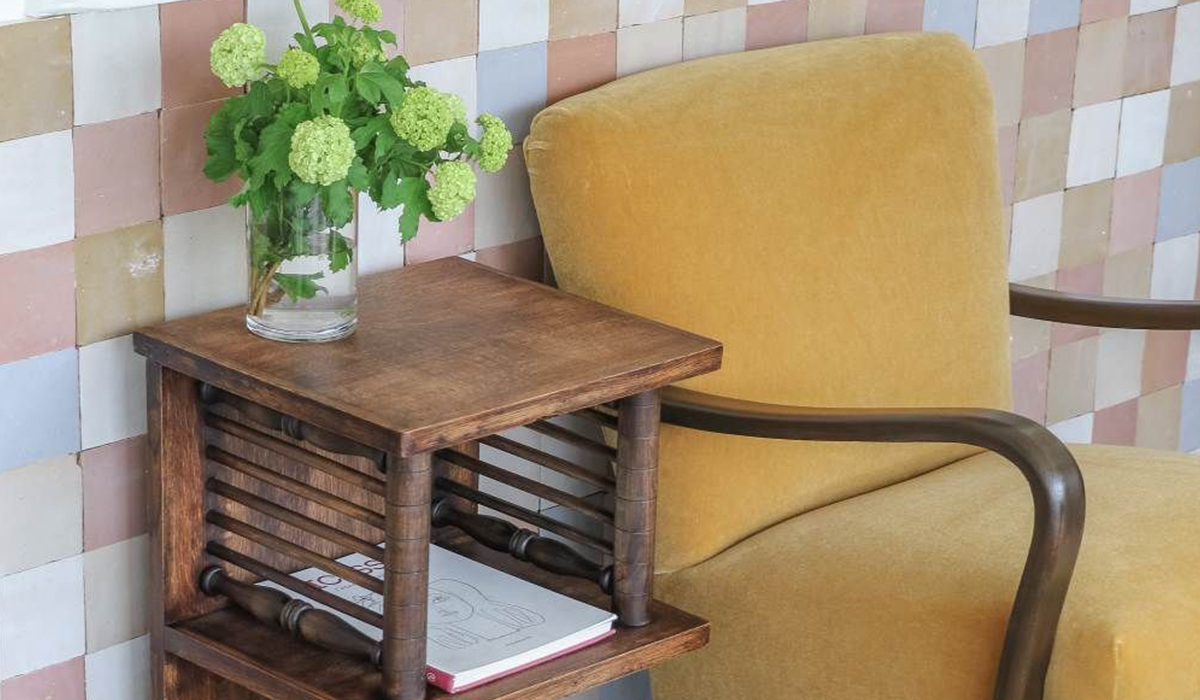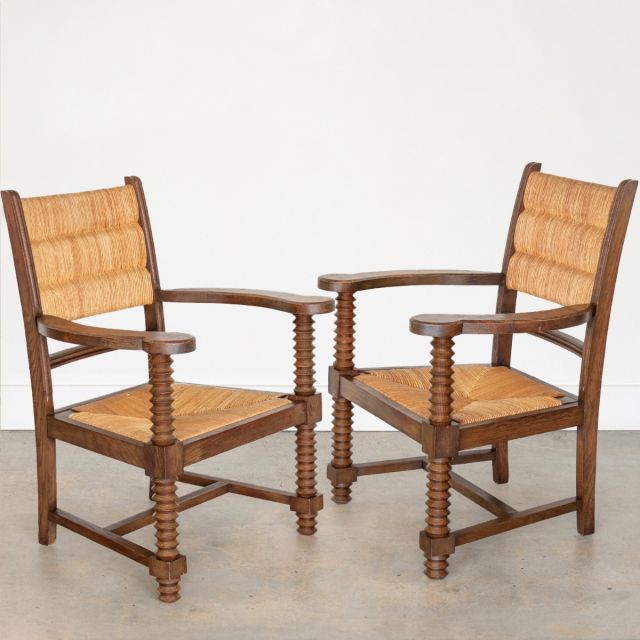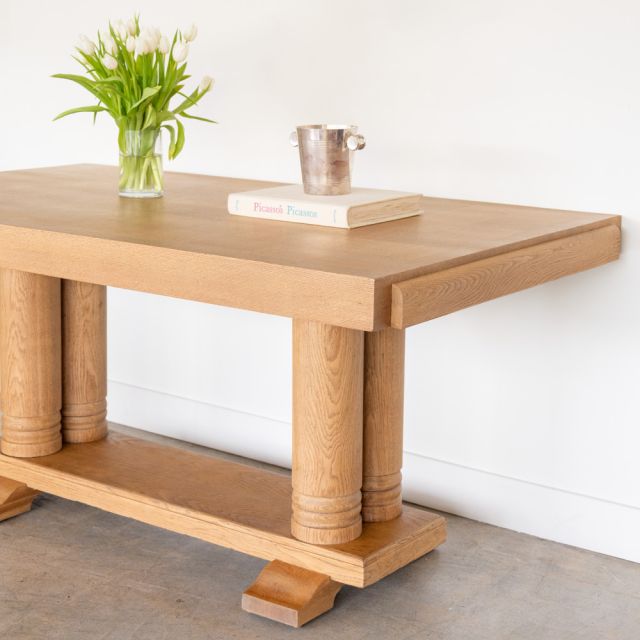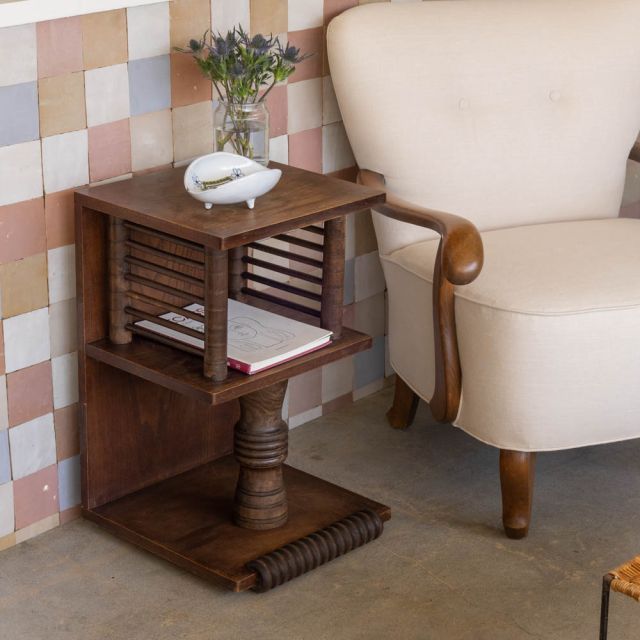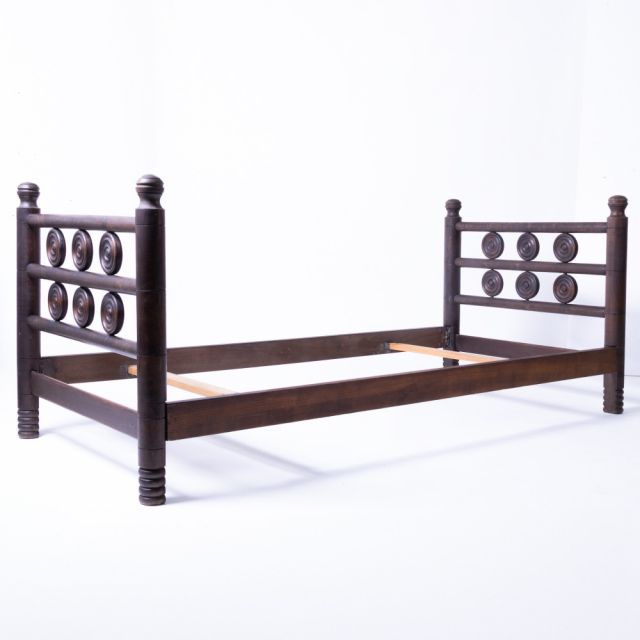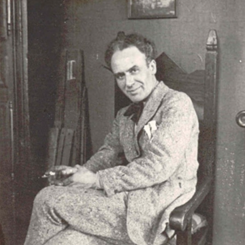
Few designers have achieved the balance of rustic warmth and modern elegance as effectively as Charles Dudouyt. Decades after his passing, his work remains sought after by collectors and interior designers, reflecting a distinctive aesthetic that blends craftsmanship with bold design. His ability to merge natural materials with architectural forms distinguishes his creations and underscores his enduring influence on modern furniture design.
From Illustration to Innovation
Born in 1885, Charles Dudouyt began his career as an artist. After studying at the Germain Pilon school, he worked as an illustrator for publishing houses such as Calmann-Lévy. His early work in the arts honed his ability to observe and translate complex forms into visual language, a skill that would later define his approach to furniture design. Following his service in World War I, Dudouyt shifted his creative focus to a more permanent medium: woodworking.
The transition from illustration to furniture design was not merely a change of profession, but an extension of his artistic vision. His familiarity with composition and texture allowed him to experiment with design elements that were unconventional at the time. Rather than adhering to the ornamental excesses typical of early 20th-century French design, Dudouyt pursued a more grounded, geometric aesthetic. This innovative approach set him apart from his peers and laid the foundation for his distinctive style.
Defining a Distinctive Style
In 1920, Dudouyt and his wife established L’Abeillée, a rustic furniture workshop that initially produced decorative objects and lighting. Over time, furniture became the primary focus of their work. By 1933, Dudouyt expanded to Paris, opening La Gentilhommière, a combined workshop and showroom where his designs could be displayed and sold. This move allowed him to engage more directly with a growing clientele interested in modernist interpretations of traditional craftsmanship.
Dudouyt’s furniture is distinguished by its use of natural materials, particularly oak, ash, and beech. He favored robust, durable woods that could support the substantial forms he envisioned. Despite the structural solidity of his work, Dudouyt incorporated carved details and rounded edges that softened the overall aesthetic. This balance between strength and refinement is a defining characteristic of his designs.
Texture also played a critical role in Dudouyt’s work. He frequently used materials such as leather, wicker, and rope to introduce tactile variety and visual depth. This emphasis on materiality gave his pieces a sense of warmth and functionality. Each item was crafted with an attention to detail that reflected his belief in the importance of both beauty and utility.
One of the most distinctive aspects of Dudouyt’s designs is his manipulation of proportions. He often employed exaggerated forms—thick legs, substantial frames, and bold silhouettes—but counterbalanced these elements with fine details and organic materials. For example, his oak lounge chairs exhibit a striking, geometric frame softened by intricately woven seats. This interplay of scale and delicacy creates a sense of visual harmony and gives his work a timeless quality.
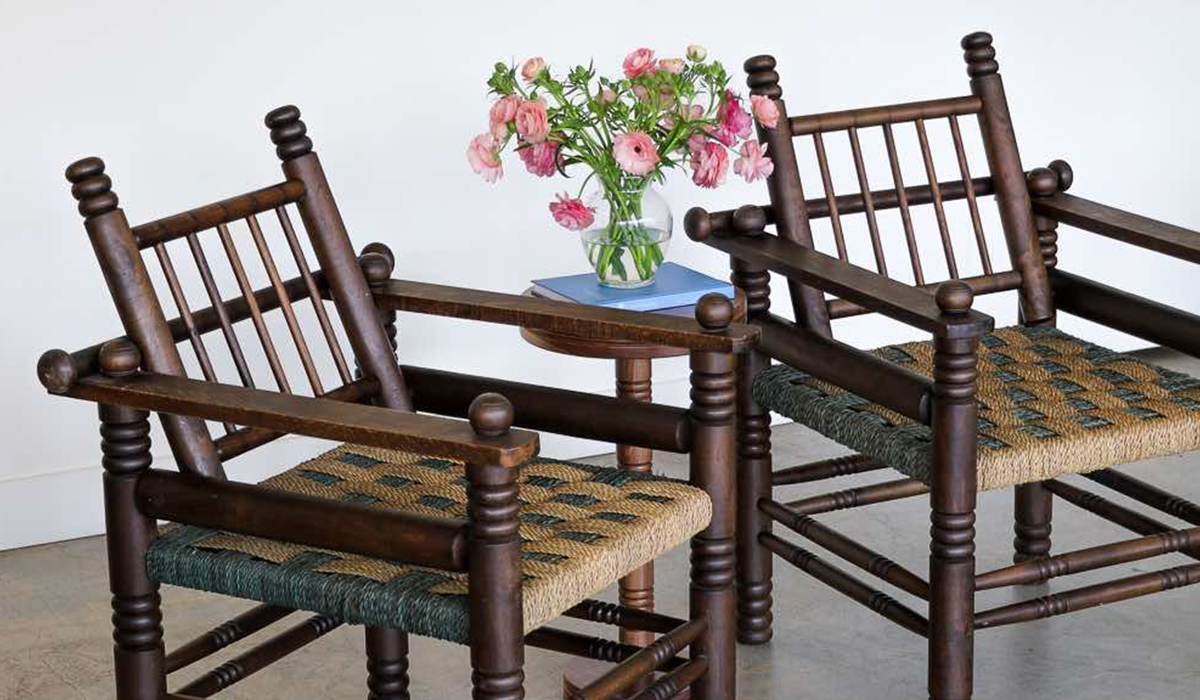
Why Dudouyt Still Matters Today
Charles Dudouyt’s work remains relevant because of its enduring commitment to craftsmanship and design integrity. At a time when industrialization and mass production were transforming the furniture industry, Dudouyt maintained a dedication to handcrafting each piece. This artisanal approach not only ensured a high standard of quality but also imbued his designs with a unique character that mass-produced items could not replicate.
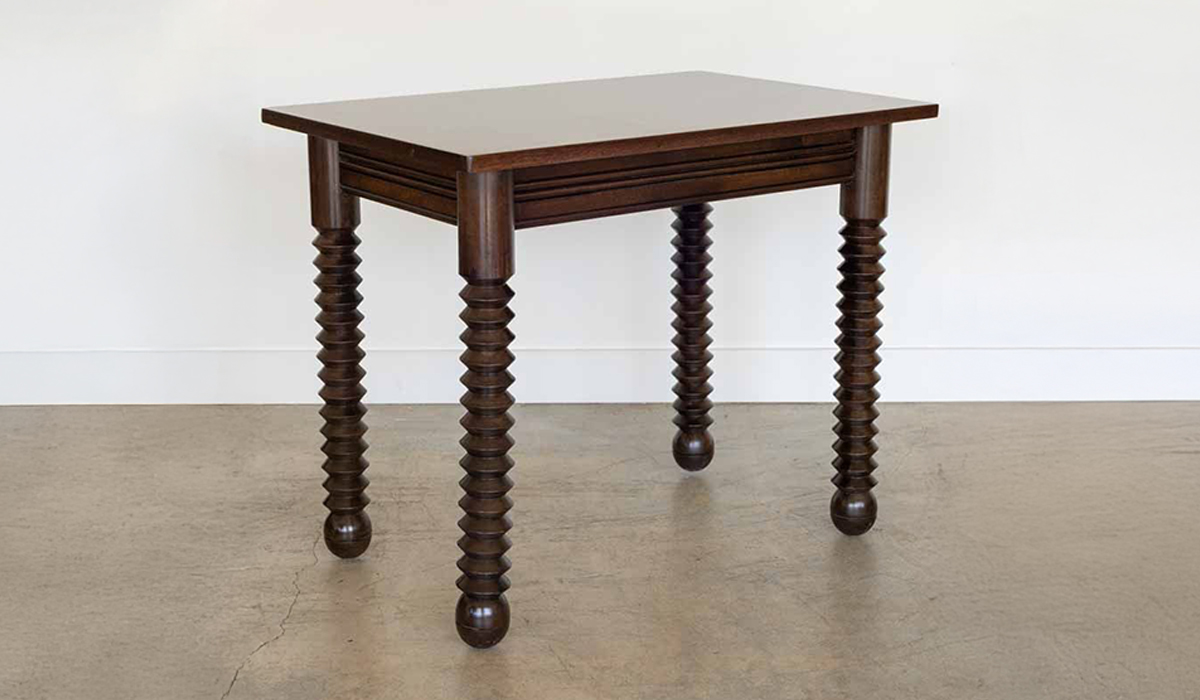
A Legacy That Lives On
Charles Dudouyt’s legacy extends beyond the individual pieces he created. His work represents a broader commitment to the principles of thoughtful design and meticulous craftsmanship. In an era where fast furniture and disposable design are increasingly common, his creations stand as a reminder of the enduring value of well-made, carefully considered objects.
The architectural quality of Dudouyt’s designs further underscores their timelessness, for his furniture is characterized by structural integrity and a clear, deliberate use of form. This architectural approach ensures that his pieces not only endure physically but also retain their aesthetic relevance across changing design trends. The ability to merge rustic materials with modernist forms remains a defining aspect of his work and contributes to its continued appeal.
Collectors and historians recognize Dudouyt as a pivotal figure in 20th-century French design. His influence is visible in the work of contemporary designers who similarly seek to balance form and function while emphasizing the inherent beauty of natural materials. By prioritizing craftsmanship and artistic integrity, Dudouyt established a standard that continues to inspire future generations of designers.
Charles Dudouyt’s contributions to furniture design endure as a testament to the power of thoughtful craftsmanship and innovative design. His ability to blend robust materials with refined details creates pieces that are both visually compelling and highly functional. Decades after his passing, his work remains a touchstone for those who value design that is both timeless and forward-thinking.
